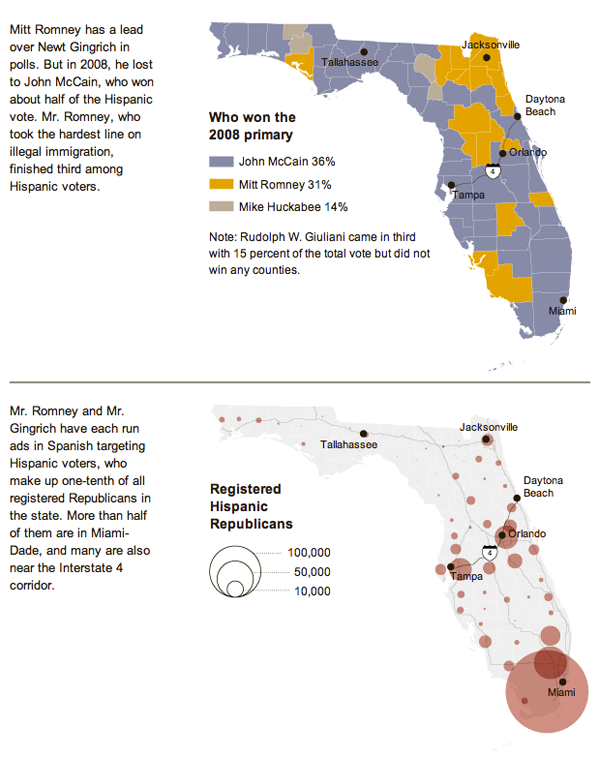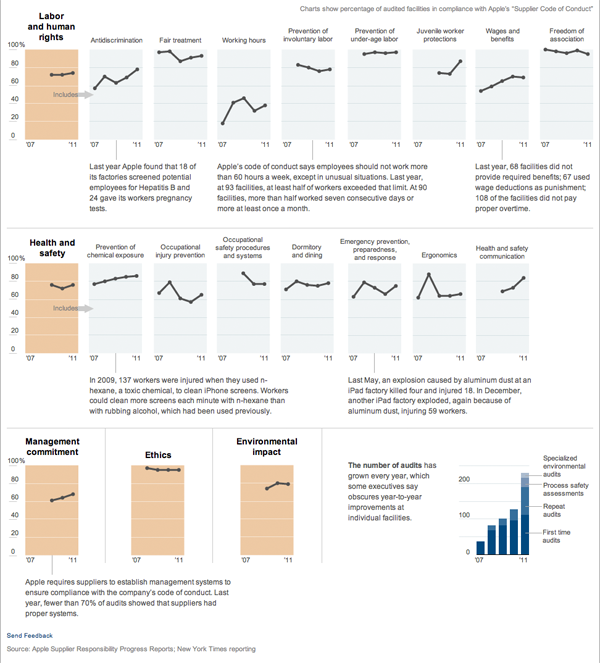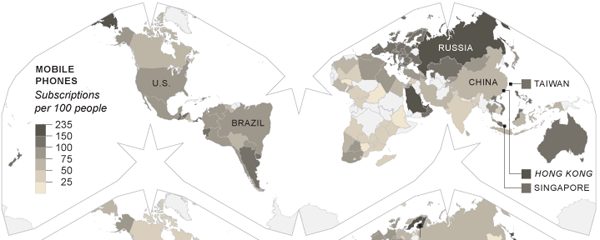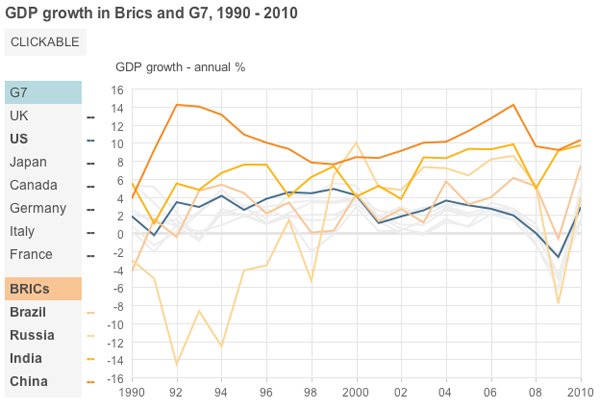The Republican primaries…they’re still going on…on the long inevitable road to Romney’s coronation. Next up is Florida, always an interesting state to watch. There are a lot of people there with a whole host of interesting demographic slices. Perhaps one of the most interesting ones, at least to the media, is the Hispanic vote. Other things to look at in Florida include the burst housing bubble and rather high unemployment.
The New York Times published a graphic with a few maps and charts trying to paint the landscape of the Florida primary battle. These two selections below show which Republican primary candidates won which counties in 2008 as well as the size of the Hispanic population registered Republican.

Credit for the piece goes to Haeyoun Park.









